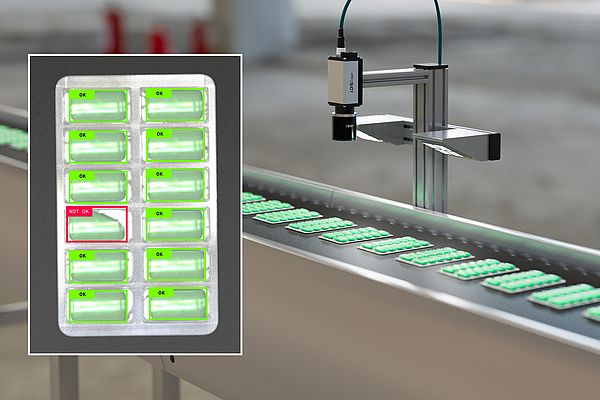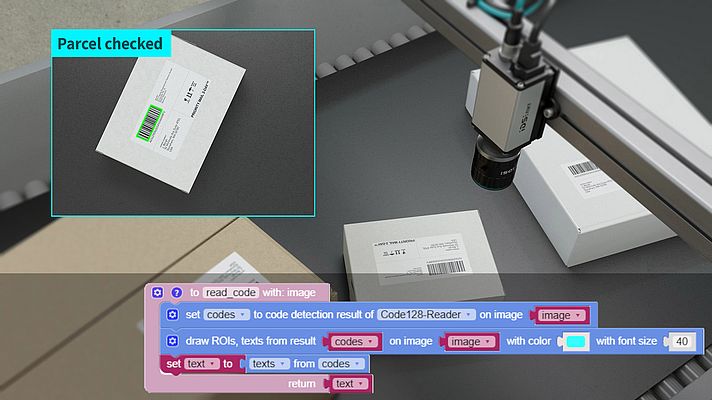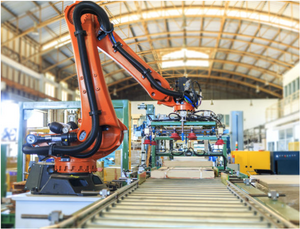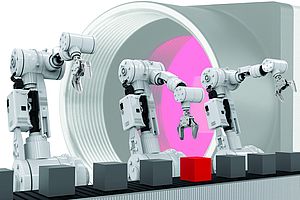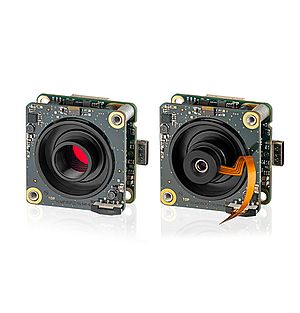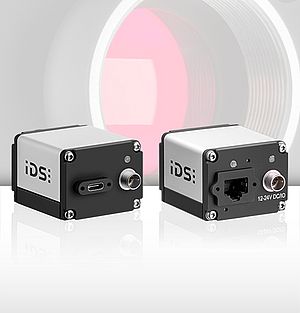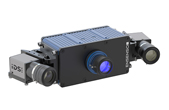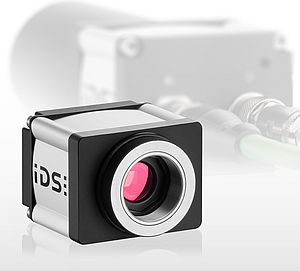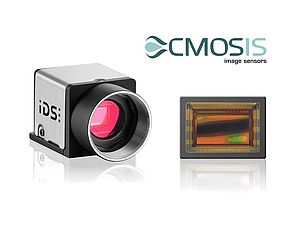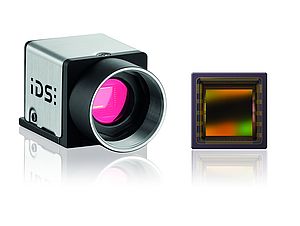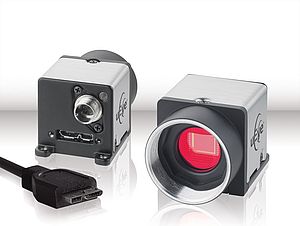While the possibilities of AI-based image processing are fascinating, questions remain in many companies about how they can implement in their existing applications. How exactly the technology works and how to get it up and running in your own application still raises uncertainties and shows gaps in knowledge in numerous industries. Manufacturers of intelligent AI systems and cameras are providing answers by simplifying the use of AI-based embedded vision systems, among other things. IDS NXT is an example - this complete smart AI system opens the door to the effortless use of AI-based image processing not only for experts, but also for citizen developers. This makes integration into applications not only easier, but also quicker too.
Detecting, sorting, counting, verifying completeness
AI-based image processing has the ability to classify images into different categories - this is very helpful when it comes to detecting and classifying products. This makes it possible to automate many tasks that are still all too often done by humans. This includes identifying defects, sorting objects on conveyor belts and completeness checks. In particular, their ability to recognize complex patterns and structures in images makes them an important tool in quality assurance. This is because these are usually very difficult to detect with the human eye.
Feasibility studies for domain experts
Considering the many opportunities and challenges in the field of image processing, especially when using previously unknown technologies, tools and methods, carrying out feasibility studies is becoming increasingly important. On the one hand, they enable a reliable assessment of feasibility, but also carry the risk of quickly becoming complex and cost-intensive. However, the key skills for working with machine learning methods are no longer the same as for rule-based image processing. The quality of the results is no longer determined by the product of a manually developed program code by an image processing expert, but by the learning process with suitable sample data. Above all, this requires a deep understanding of the respective application.
What also reduces the effort, especially for initial application tests, is the fact that with a complete AI system such as IDS NXT, a large part of the development and evaluation process can be managed in a simple and intuitive cloud service. In this AI Vision Studio, users do not need to have any experience in AI, application programming or image processing. This benefits the very complex development of embedded systems in particular, which previously required special expertise with very specialized development tools. Under these circumstances, feasibility analyses can then be carried out solely by domain experts who have the most product knowledge. This means that companies are less reliant on programmers and image processing experts during the evaluation phase.
Short training cycles through the strategy of small steps
Once the initial findings from the feasibility analysis tests are available, adjustments can be made to the further procedure in order to increase the quality and performance of the AI models. It is important to note that a transition to larger data sets may be necessary. However, this should be a gradual process to ensure that models are trained correctly and robustly. A small data set at the beginning reduces the risk of overfitting, where the model "memorizes" the training data too much and generalizes poorly to new, unknown data. In addition, working with less data shortens the training phases and allows for faster experiments and iterations, allowing you to receive timely feedback and adapt the model or data sets accordingly.
User-friendly tools, such as those provided by the AI Vision Studio "IDS lighthouse" even for inexperienced users, also help to evaluate and evaluate training results with suitable sample data directly in the cloud. This means that you lose little time at the start of the project when experimenting due to time-consuming preparation and carrying out tests on the real machine, especially if several iterations are necessary.
Easy integration with All-in-One system
However, even if image processing can be generated intuitively with the help of user-friendly tools and even newcomers can achieve good results, its seamless integration into the customer application represents another significant challenge. This manifests itself in particular in the interfaces, both at hardware and software level. On the hardware side, this includes aspects such as connectors, cables, adapters and cable lengths to ensure a seamless connection. On the software side, integration revolves around issues relating to transmission protocols, result formats and the seamless integration of the image processing software into the system's control system. Software development kits (SDKs) often play a decisive role here, as they provide the necessary tools and resources to flexibly adapt the image processing functionality to existing system architectures. In order to master the variety of programming languages, developers are essential.
To ensure that image processing can be successfully and easily integrated not just as an isolated technology, but as an integral part of the entire application process, the hardware and software aspects of a user-friendly system must be considered from a holistic perspective. This is made possible by all-in-one embedded vision systems such as IDS NXT.
Intelligent image analysis in a building block system
The promise that AI-based image processing can be easily used by anyone, even without specialist knowledge of AI or application programming, only works if all components are designed simply and comprehensively, from image acquisition to the transmission of analysis results or the control of a machine. In addition to the intelligent camera hardware, IDS NXT also includes the AI data and training platform and enables individual analysis sequences to be plugged together via a block-based visual editor, which are then executed as apps on the camera at the touch of a button. With perfectly coordinated build tools, embedded vision development could hardly be easier. With standardized interfaces, such as digital inputs and outputs, a restful web service and industrial protocols such as OPC-UA, system integration of the complete system is as easy as with a smart sensor. Thanks to the app-based system, the analysis task can also be converted from one product to another within seconds. This minimizes costs for set-up times and makes specific embedded vision devices economically viable even for batch size 1. Simple and holistic access to AI-based methods, as with the example of IDS NXT, creates more acceptance for the new technology, which means that the knowledge gaps can finally be closed.
Author: Dipl.- Ing. (FH) Heiko Seitz, IDS Imaging Development Systems GmbH




